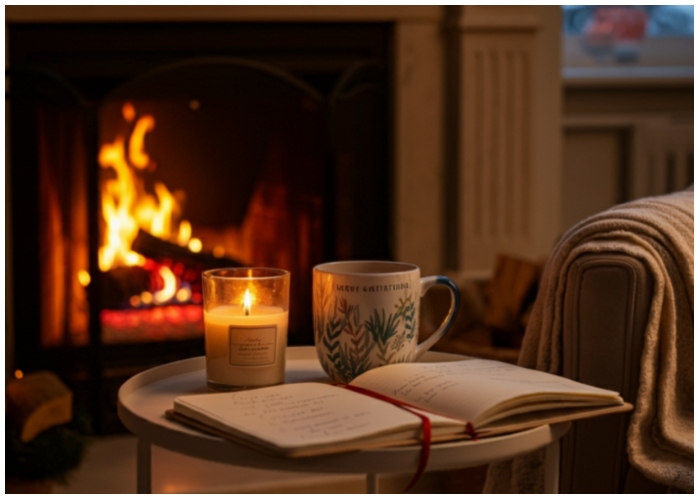From chunky knits and soft lighting to warm drinks and quiet nights in, cozy is no longer just a seasonal vibe—it’s a lifestyle. Across fashion, home design, and wellness, comfort has become the new aspiration. This collective shift toward coziness isn’t just about aesthetics. It’s a cultural craving for calm in a world that never seems to slow down.
The Cozy Aesthetic, Defined
What makes something cozy? It’s more than fuzzy socks and hot cocoa. Cozy culture blends warmth, softness, and simplicity into every part of daily life. It’s about creating environments and experiences that soothe, not stimulate.
This can mean dimming the lights after sunset, layering soft textures around your home, or choosing fashion that prioritizes feel over flash. It’s the candle that makes your living room smell like vanilla and the cardigan you reach for every single night.
There’s something universally comforting about cozy. It signals safety, belonging, and rest—all things we’re wired to need, but often forget to prioritize.
Why Cozy Culture Is Trending Now
In a hyperconnected world filled with noise, speed, and endless scrolling, people are hungry for softness. Cozy culture emerged in response to global stress, burnout, and the growing sense that we’re always “on.” Whether we’re dealing with too many emails or too much uncertainty, comfort has become a form of quiet resistance.

Social media helped fuel the movement. Hashtags like #cozycore, #softlife, and #hygge fill feeds with images of crackling candles, warm-toned decor, and peaceful rituals. But this trend isn’t just about curating a vibe—it’s about reclaiming stillness, rest, and contentment in small, tangible ways.
In short, cozy isn’t just cute. It’s healing.
Cozy as a Lifestyle—Not Just a Look
The best part about cozy culture? It’s accessible. You don’t need a fireplace or a Pinterest-perfect home to lean into comfort. It starts with intention. Cozy living means slowing your pace, softening your spaces, and letting go of pressure to constantly optimize your time.
Here’s how people are embracing coziness in everyday life:
- Home design: Soft lighting, layered rugs, neutral palettes, and natural textures like wood and wool are becoming interior staples. It’s about creating spaces that invite you to unwind, not perform.
- Fashion: Oversized knits, lounge sets, sherpa jackets, and breathable fabrics are replacing restrictive silhouettes. Comfort is no longer “sloppy”—it’s stylish.
- Daily rituals: Think slower mornings with tea, Sunday baking sessions, journaling under a blanket, or quiet walks with no agenda. Cozy isn’t flashy—it’s personal.
- Connection: Cozy doesn’t have to mean solitude. It also includes close-knit gatherings, potluck dinners, and sharing space with people who make you feel safe and seen.
The throughline? Emotional softness. Cozy culture gives permission to relax, to feel, and to let go.
The Emotional Power of Comfort
While often underestimated, comfort is deeply connected to mental health. When we feel physically and emotionally safe, our nervous system relaxes. This reduces stress hormones, improves sleep, and fosters a sense of belonging.
Cozy environments encourage us to slow down, be present, and reconnect with ourselves. They offer a buffer against overwhelm and invite us to notice the good that’s already here.
That’s why cozy culture is about more than candles and sweaters—it’s about how those things make us feel: secure, grounded, and cared for.
Chasing cozy isn’t about escaping life. It’s about softening the edges so life feels a little more livable. In a world that constantly demands more, cozy culture is a quiet but powerful rebellion—a reminder that comfort, care, and calm are not luxuries. They’re essential.